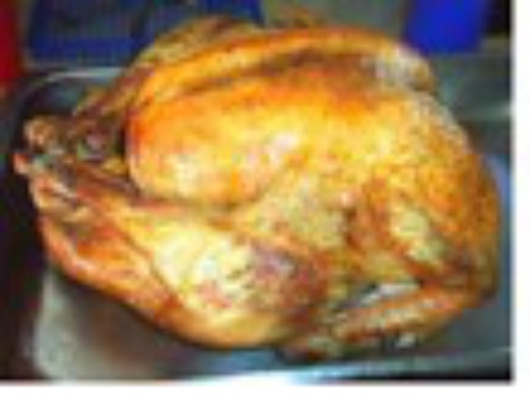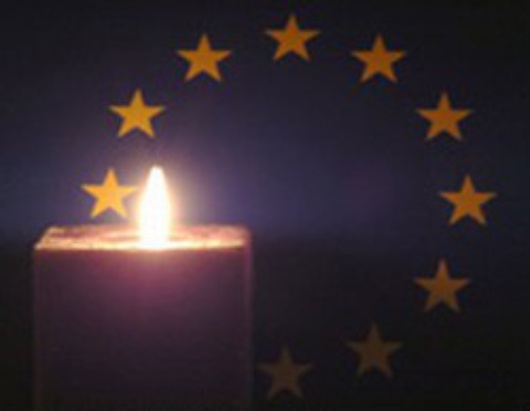Father Christmas in the kitchen
Published on
Translation by:
 sally harbinson
sally harbinson
European gourmets, get your taste buds at the ready! This virtual menu, teeming with flavours and traditions, brings you Christmas dinner from across the continent.
 On average, European families spend €250 on their Christmas feasts. For this money, French revellers treat themselves to champagne and foie gras. For Norwegians, it’s salmon while the Portuguese enjoy boiled cod… Throughout the continent, the Christmas meal is a time for indulgence and enjoying yourself with family around the dinner table. So why not try a menu showcasing Europe’s culinary variety, in which each dish has its own unique history?
On average, European families spend €250 on their Christmas feasts. For this money, French revellers treat themselves to champagne and foie gras. For Norwegians, it’s salmon while the Portuguese enjoy boiled cod… Throughout the continent, the Christmas meal is a time for indulgence and enjoying yourself with family around the dinner table. So why not try a menu showcasing Europe’s culinary variety, in which each dish has its own unique history?
Swedish mulled wine
Glogg is a spiced wine served throughout Sweden over the festive period. It usually comes with spiced bread and is really easy to make. It’s best to prepare it a week in advance to allow all of the flavours to be released in time for it to be drunk. Raisins and almonds go really well with this drink, for which you will need: 1 bottle of red wine, some vodka, cloves, 2 to 4 cinnamon sticks, 1 or 2 pieces of ginger, the zest of a lemon, 125 to 250 g of sugar, vanilla sugar and a few cardamom seeds. Crush the cloves and cardamom in a mortar and put the spices and lemon zest in a glass jar with enough vodka to cover the ingredients. Leave it overnight. Then put everything into a saucepan, adding sugar and wine… heat the mixture, without bringing it to the boil. Add sugar and wine to suit your taste. God Jul!
Spanish eel tapas
 Costing at least €100 per kilo in December, angulas, or baby eels, are one of the most popular dishes amongst Spanish people for the Christmas meal. Best caught at night (after 9pm) from October to February, this delicacy’s exorbitant price is due to the fishing methods used: the old-fashioned way, using lamplight and nets. They are eaten quite simply, fried in a little olive oil, seasoned with some garlic and parsley, and eaten on a hunk of warm bread. Feliz Navidad!
Costing at least €100 per kilo in December, angulas, or baby eels, are one of the most popular dishes amongst Spanish people for the Christmas meal. Best caught at night (after 9pm) from October to February, this delicacy’s exorbitant price is due to the fishing methods used: the old-fashioned way, using lamplight and nets. They are eaten quite simply, fried in a little olive oil, seasoned with some garlic and parsley, and eaten on a hunk of warm bread. Feliz Navidad!
British turkey
What would Christmas be without a traditionally British turkey accompanied by cranberry sauce and the inescapable brussel sprouts? Sprouts, scorned for the rest of the year, become the stars of British supermarkets from the beginning of December. Begin by making the stuffing: 175 g of butter, 900 g of sausage meat, 200 g of bacon, a bunch of sage, 4 heaped tablespoons of breadcrumbs, 1 beaten egg, a large onion, salt and pepper. Mix all of the ingredients together and use this concoction to stuff the turkey. Allow forty to fifty minutes of cooking time per kilo to be assured of the best of British cooking. Merry Christmas!
Dessert from the Rhineland
 Eating “Christ in nappies”?! What?! Better known as Christstollen, the Germans have been making this cake for over 500 years: it is supposed to look like baby Jesus wrapped in swaddling clothes. You will need 500 g of flour, 200 g of fine sugar, a sachet of vanilla sugar, a pinch of salt, 4 drops of almond essence, 5 cl of rum, grated lemon zest, a pinch of cardamom, a pinch of grated nutmeg, 3 whole eggs, 175 g of softened butter, 250 g of soft white cheese, 125 g of currents, 200 g of raisins, 100 g of candied lemon peel and 100 g of almonds or hazelnuts. That’s it! The recipe is easy: just click here. If there is any left over after Christmas, this cake should last up to a month, if kept in a tin. Froehliche Weihnachten!
Eating “Christ in nappies”?! What?! Better known as Christstollen, the Germans have been making this cake for over 500 years: it is supposed to look like baby Jesus wrapped in swaddling clothes. You will need 500 g of flour, 200 g of fine sugar, a sachet of vanilla sugar, a pinch of salt, 4 drops of almond essence, 5 cl of rum, grated lemon zest, a pinch of cardamom, a pinch of grated nutmeg, 3 whole eggs, 175 g of softened butter, 250 g of soft white cheese, 125 g of currents, 200 g of raisins, 100 g of candied lemon peel and 100 g of almonds or hazelnuts. That’s it! The recipe is easy: just click here. If there is any left over after Christmas, this cake should last up to a month, if kept in a tin. Froehliche Weihnachten!
Atmosphere, atmosphere
Finally, because presentation is everything, remember to decorate the dinner table well for your Christmas meal. Be inspired by a tradition from the South of France: three tablecloths of different colours (preferably white, gold and red), one on top of the other, decorated with 3 candlesticks, to symbolise the Holy Trinity. The white should be on top on Christmas Eve and should be replaced by the red on Christmas morning. And if you feel a bit peckish after Midnight Mass, succumb to the Provencal tradition of “13 desserts”. This number represents the 13 guests at the Last Supper and the treats include dried and candied fruits, almonds, nougat, nuts, dates and traditional flat bread… Joyeux Noël!
This mêlée of flavours is merely a taster of the riches of European cuisine… and this is the day of the year to include these exotic tastes with other specialities, and for making New Year’s resolutions for 2006! A word of advice? Forget the diet!
Translated from Le père Noël aux fourneaux


